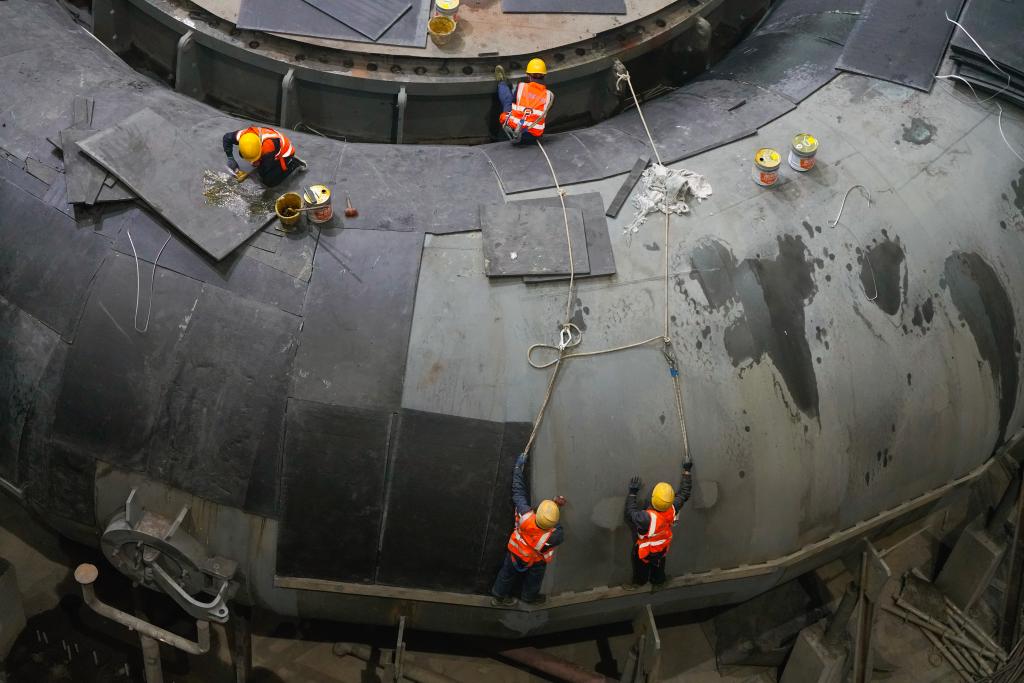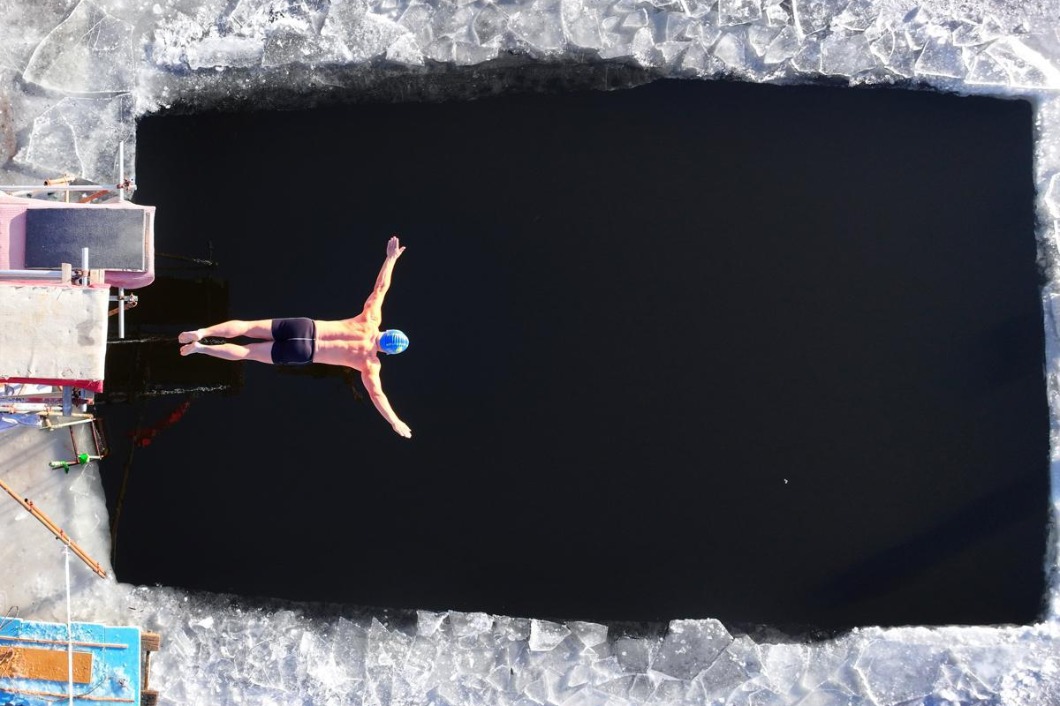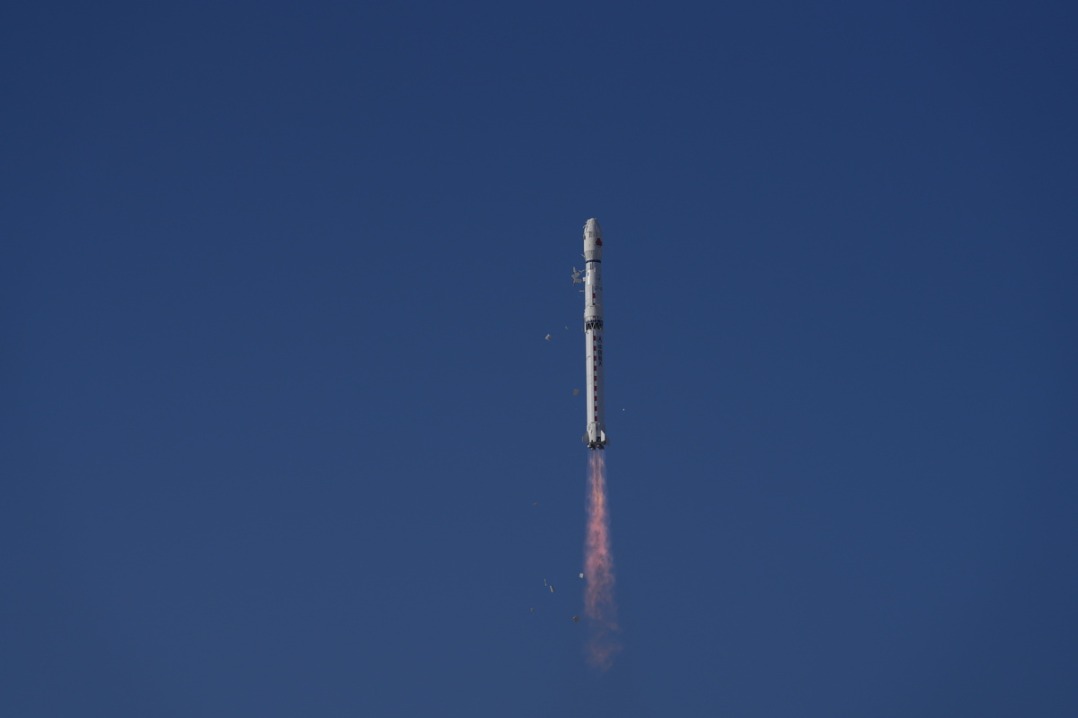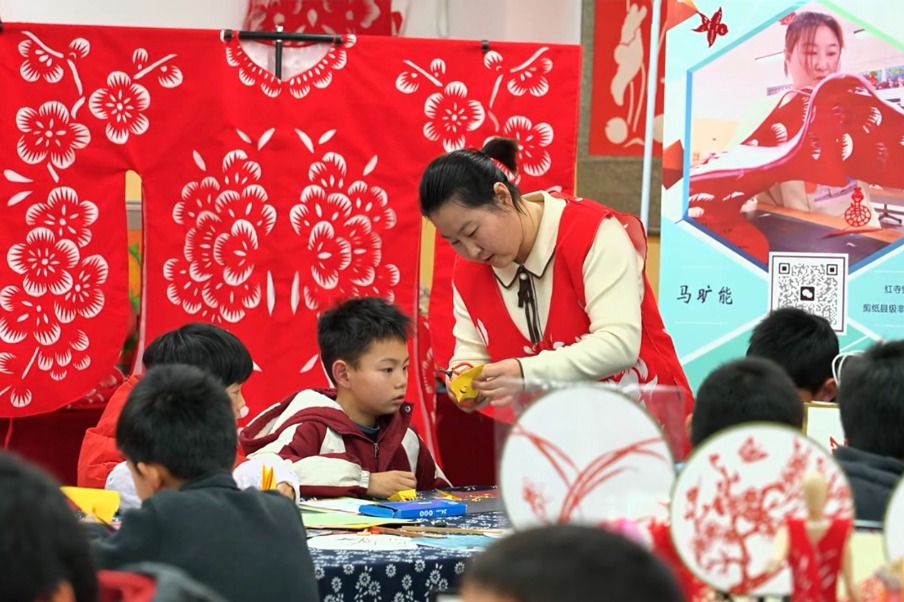China showcases high-altitude engineering prowess with 38-meter core sample extracted


LHASA -- Chinese engineers extracted a 38.1-meter-long concrete core sample from a dam on Sunday. While setting a new national benchmark for core sampling in similar arch dam types, it also showcased the country's advanced concrete pouring and quality control capabilities in challenging high-altitude environments.
The cylinder was drilled from the Yebatan Hydropower Station, a project located at the junction of Baiyu County in Southwest China's Sichuan province and Konjo county in Xizang autonomous region, which is also in the southwest of China.
The Yebatan station is being built on the upper reaches of the Jinsha River, which form the upper mainstream section of the Yangtze River. With a highest elevation of nearly 2,900 meters -- the dam will stand 217 meters tall and have an installed capacity of 2.24 million kilowatts, placing it among the country's largest hydropower projects.
Notably, the lifespan of a dam depends on how well its concrete was poured. The project's developer said that the massive core sample, roughly the height of a 12-story building, remained intact as it was extracted, indicating that the dam's concrete was laid to a high standard. The 245-millimeter-wide core was drilled vertically through 13 sections of the arch dam, cutting across 12 horizontal joints and 80 layers of poured concrete.
This project's high-altitude location posed extreme technical construction challenges. With temperature swings from 37.1 degrees Celsius in the day to minus 23.5 degrees Celsius at night, the project team, collaborating with academicians and experts -- successfully extracted the concrete core by using smart construction technologies including AI-assisted temperature control and winter pouring insulation systems.
Construction of the hydropower station's main structure began in September 2018, and its first generating units are set to be online by late 2025.
As a key part of China's west-to-east power transmission program, the station is expected to generate roughly 10.2 billion kilowatt-hours of electricity per year, once it is fully operational.
It will save almost 4 million tonnes of standard coal and cut carbon dioxide emissions by about 7.4 million tonnes annually, contributing to the country's strategy to curb greenhouse gas output, as it aims to peak emissions by 2030 and reach carbon neutrality by 2060.
- Former senior official of Ningxia sentenced to death
- Development program narrows urban-rural gap in Guangdong
- Wuxi Winter Bazaar creates cross-cultural gathering
- Expressway service area featuring a natural hot spring to open soon in Guangdong
- Former Ningxia political advisor sentenced to death for bribery
- Former senior official of Jiangxi expelled from CPC





































